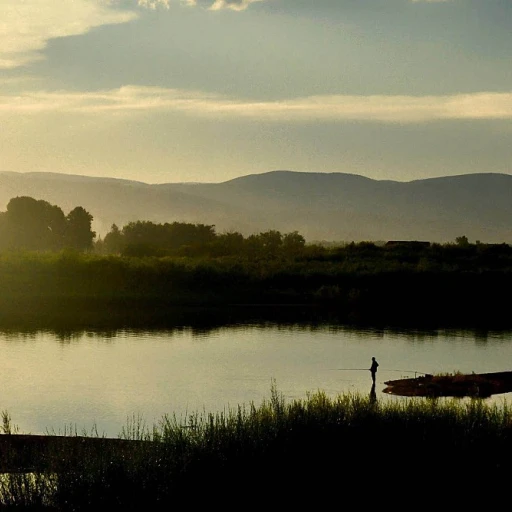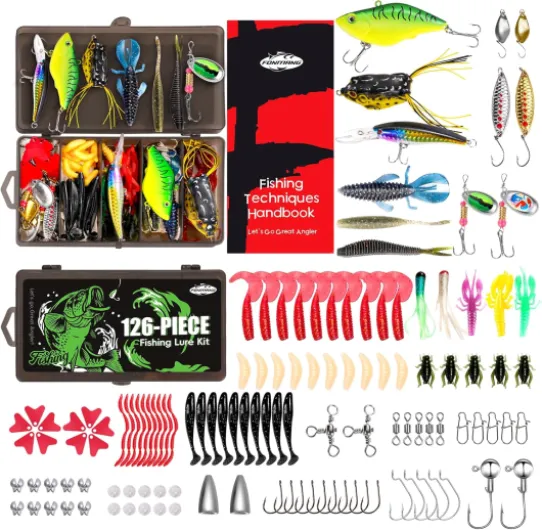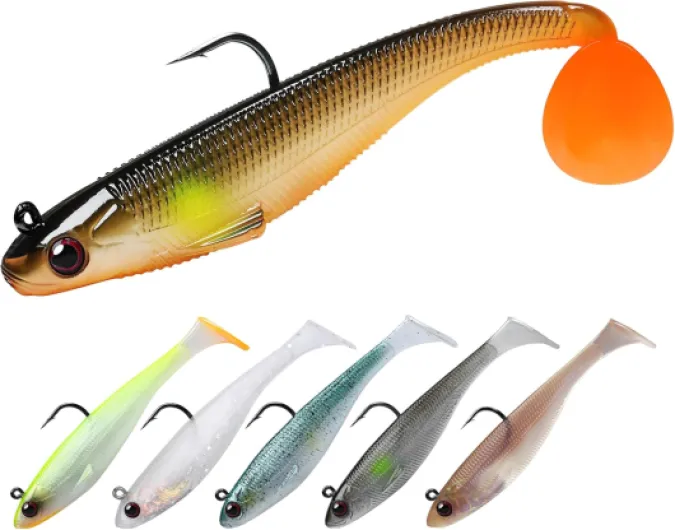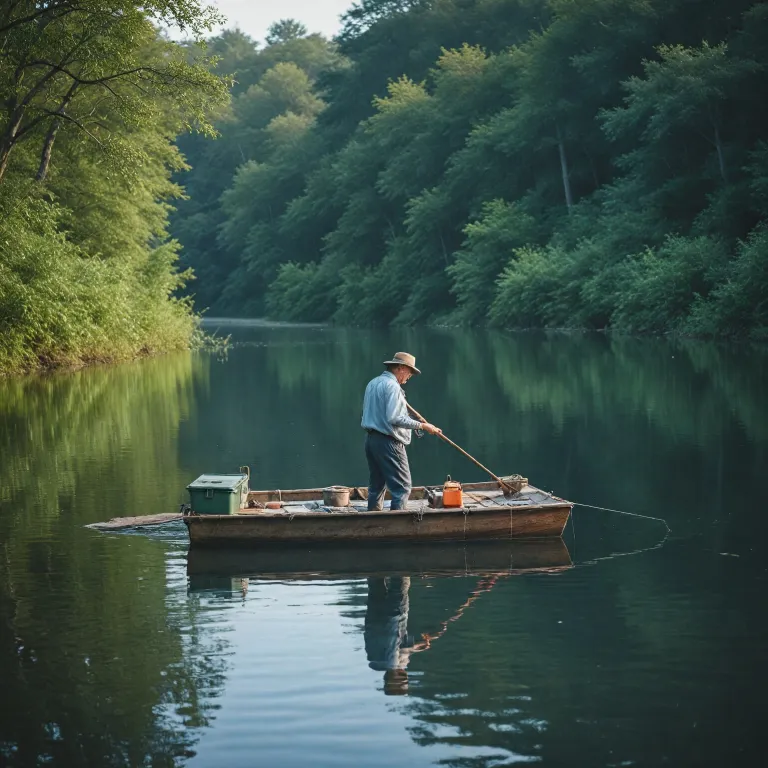Understanding Cut Bait
Getting to Know Cut Bait
Understanding cut bait is a vital first step for any fishing enthusiast aiming to enhance their bait fishing technique. Cut bait refers to pieces of fish, either smaller or larger, used strategically to attract a variety of fish species. Whether you're targeting the common fish in your local waters or chasing after larger fish off the coast of San Diego, using cut bait can dramatically increase your fishing catch and improve your mastery over different fishing rigs.
Cut bait has been a favorite among anglers across the United States for its unmatched versatility and effectiveness. From beach fishing with a circle hook to intricate rig setups, cut bait can be customized to fit different fishing scenarios. By using the best bait, you increase your odds of catching not only the smaller fish but the elusive larger fish as well.
In the realm of fishing, mastering the blue art of using cut bait involves more than just attaching a piece to your hook. It's about selecting the right pieces that mimic the natural prey of your target species and using them to seduce fish into a bite. As you compose the art of cut bait fishing, dive deeper into other popular fishing methods, like the use of crankbaits, to broaden your skill set and better understand how different baits serve specific purposes. For some insightful tips, you can explore more about "
the art of using crankbaits" in your fishing adventures.
In the following sections, get ready to explore how to choose the right cut bait for your fishing expedition, prepare it for optimal use, and discover proven techniques for achieving a successful fishing expedition.
Selecting the Right Cut Bait
Choosing the Perfect Bait for Every Situation
Selecting the right cut bait is arguably one of the most crucial steps in ensuring a successful fishing trip. An understanding of the specific fish species you aim to catch will heavily influence your choice. Larger fish typically show a preference for more substantial bait pieces, making fish cut from bluefish or mackerel an excellent choice. Conversely, bait small such as sardines or anchovies can be more appealing to smaller fish or common fish species.
The habitat and conditions where you are fishing also play a significant role in determining the best bait. For instance, beach fishing can demand a different type of bait compared to fishing at sea. Considering local factors, like in San Diego, certain fish species might favor one bait over another based on the season and the surrounding aquatic conditions.
Here are a few considerations to keep in mind when selecting cut bait:
- Local Knowledge: Understanding what bait works best in your area by connecting with local fishermen or browsing Facebook and YouTube communities can provide invaluable insights.
- Fish Size: Decide between targeting smaller fish with smaller cut pieces or opt for larger bait to lure in bigger catches.
- Bait Durability: Ensure that the bait will stay on the hook long enough to attract fish, utilizing techniques such as securely threading the bait onto the rig.
- Species Preferences: Some fish are more responsive to certain bait types, so research the common species in the area to make an informed choice.
Remember, the effectiveness of the bait will depend not only on the type but also on your fishing techniques and rig setup. Selecting the right combination is critical in achieving the fishing catch you're hoping for.
For further details on selecting versatile bait options, consider exploring the
versatility of soft plastic lures in recreational fishing. These lures can also complement your cut bait approach, providing alternatives in varying water conditions.
Preparing Cut Bait for Optimal Use
{"
Getting the Cut Bait Ready for Action
When gearing up for a day of fishing, ensuring your cut bait is prepped for optimal use is crucial. Mastering the art of using cut bait involves attention to detail and understanding how to prepare it for different fish species.
First, decide on the size of the pieces you'll be using. Larger fish, like those you might target near San Diego's coast, often require bigger chunks, while smaller fish need smaller pieces. Proper size selection will increase your chances of a successful fishing catch.
To enhance your efforts, consider the following preparation steps:
- Deboning and Filleting: Remove bones and scales from your bait fish. This step ensures your bait will stay on the hook better, enticing larger fish. Filleting is a common practice when preparing fish cut bait for larger species.
- Cutting Technique: Use sharp tools for precise bait cut pieces; neat edges help improve the scent trail in the water. Here, precision can make or break your bait fishing endeavor.
- Preserving Freshness: If fishing on a beach in the United States, keep your bait chilled until used. Fresh bait provides a better chance for a significant catch.
- Utilizing Circle Hooks: Pair each piece with a circle hook to increase hook-up rates. This hook type is especially effective in minimizing missed opportunities with common fish like blue species.
Whether you're fishing with rods along the shore or using rigs set up in deeper waters, proper bait preparation will enhance your fishing success. For those looking to step up their bait fishing game by improving tackle management and ensuring comfort in changing weather conditions, you might want to
explore fishing gear enhancements that provide reliability whether you're at the sea or on a lake.
Techniques for Fishing with Cut Bait
Maximizing Your Fishing Technique
`Cut bait` has long been a staple in `fishing`, offering an enticing scent and movement that attracts a wide variety of `fish species`, from smaller catches to the larger fish you are hoping to reel in. Whether you're fishing off the `beach` or from a boat in the vast `sea`, mastering the techniques associated with `cut bait` can significantly improve your `fishing catch` rates.
When anticipating your next big `bait catch`, consider these vital technique tips:
- Hook and Rigging: The right `hook` is crucial. Try using a `circle hook` for a more secure hold. When hooking the `bait`, ensure it's firmly attached—but with enough room to move, so it mimics a live `bait fish`.
- Size Matters: For `smaller fish`, opt for smaller pieces of `cut bait`. Conversely, larger chunks are preferred for big catches when targeting larger `species`.
- Casting Technique: Whether you're on the shoreline or a dock, casting correctly is a step towards a successful catch. Ensure your `rod` is adequately balanced, and practice a smooth, controlled cast.
- Considering the Tides: If you're fishing from a `beach`, keep tides in mind. Rising tides often result in more active fish, enhancing your chances of success.
Remember that successful `fish bait` techniques are not just about throwing a line in the water. By carefully selecting your bait setup, you can maximize your opportunity to `catch` even the most elusive of `sea` dwellers.
By applying these techniques, you'll tap into the vast potential of `cut bait`, optimizing your chances for a stellar `fishing` experience in places as renowned as San Diego or other top fishing spots in the `United States`. Embrace these tips and remain adaptive—because the world of `bait fishing` is as much an art as it is a sport. Be wise, be patient, and soon, you'll be sharing your photos across `Facebook` and `YouTube`, boasting your latest `catch`.
Top Products for Cut Bait Fishing
Top Gear for Successful Cut Bait Fishing
Selecting the best products for cut bait fishing can significantly enhance your fishing experience. Ensuring you have a well-equipped tackle box tailored for bait cut fishing will increase your chances of landing the perfect catch. Here’s what you need to consider:
- Circle Hooks: Opt for circle hooks when targeting larger fish species. Their design facilitates a secure hookset in the mouth, reducing the chance of it slipping off as you re-cast your rod.
- Quality Fishing Rods: A good fishing rod is essential for handling the weight of both your bait and prospective catch. While smaller fish can be managed with a lighter rod, heavier setups are advisable for larger game fish.
- Sharp Knives: A sharp knife is indispensable when preparing your fish cut and bait pieces. It ensures clean cuts, crucial for an enticing bait presentation.
- Durable Beach Rigs: Fishing from the shore, especially in areas like San Diego, can be very rewarding. Use robust rigs designed for casting long distances efficiently.
- Bait Preservation Tools: Maintaining the freshness of your bait is key. Look for coolers or bait keepers designed to keep your bait in optimum condition, especially during larger fishing expeditions.
Investing in the right cut bait fishing products not only simplifies your fishing process but also significantly boosts your fishing catch rate. By tailoring your tools and gear to the specific fish species you aim to catch, your experience will become more productive and enjoyable. Remember, when you have the right gear, common mistakes are easier to avoid.
Common Mistakes and How to Avoid Them
Avoiding Frequent Setbacks in Cut Bait Fishing
Using cut bait effectively is an art, but it's not without its potential pitfalls. Knowing what not to do is just as crucial as understanding the right techniques. By avoiding common errors, your chances of a successful catch will greatly increase.
One prevalent mistake involves the size and type of bait pieces being used. Fishermen often misjudge the size of bait needed for their targeted species. Larger fish may indeed require larger pieces; however, using excessively big chunks can deter both large and smaller fish. This miscalculation often results in fewer bites and missed opportunities, especially when targeting a mix of species.
Another common issue stems from the rig setup. An improperly set up rig will diminish the effectiveness of cut bait, often resulting in lost catches. Always ensure that your hooks, such as circle hooks, are compatible with your bait size. Rigging your hook correctly with cut bait will help you land that coveted catch.
Understanding sea conditions is also critical when beach fishing or exploring new areas like San Diego's coastlines. Strong currents and tides can affect bait presentation significantly, making it less appealing to fish if not adjusted accordingly.
Bait freshness cannot be overlooked either. Fresh cut bait often results in a far superior fishing experience compared to using stale bait. Keep your bait cool and as fresh as possible to maintain its appeal.
Take each step with care—from selecting the best fish cut to appropriately preparing smaller fish pieces for your hooks. Avoiding these common pitfalls ensures that your time spent fishing is both enjoyable and fruitful, maximizing every chance to catch something memorable.







